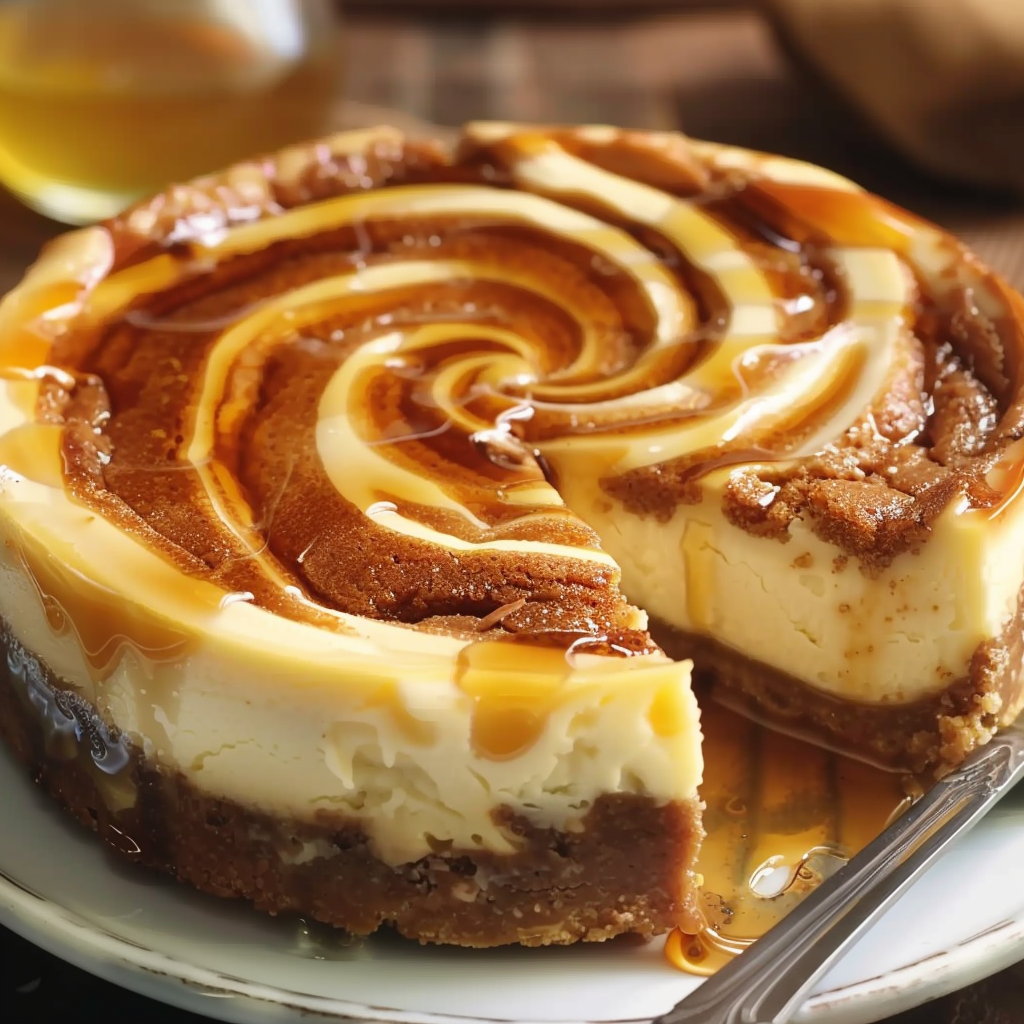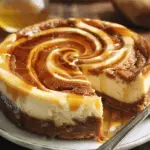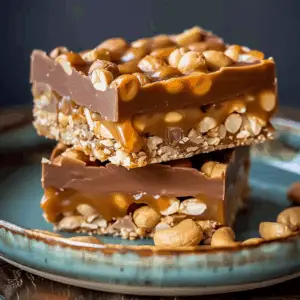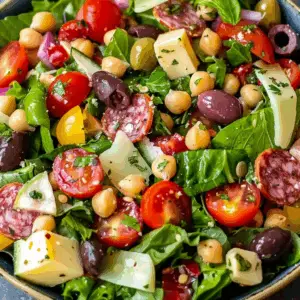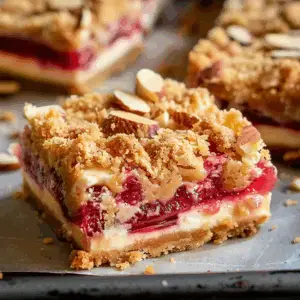Cinnamon Swirl Cheesecake
Few desserts blend comfort and decadence like a cinnamon swirl cheesecake. This bakery-style masterpiece merges the indulgent layers of creamy cheesecake with the nostalgic warmth of cinnamon rolls. The result is a show-stopping dessert perfect for holidays, potlucks, and Sunday brunches alike.
What makes this dessert so special is its fusion of two beloved treats: the fluffy, spice-laced appeal of a cinnamon roll and the rich, silky texture of a traditional cheesecake. With a crust made from cinnamon graham crackers—a twist on the classic graham cracker—and a smooth filling infused with cinnamon and honey, this recipe redefines comfort baking.
For visual inspiration, check out Pinterest boards featuring cinnamon desserts. You’ll find variations of this cake with caramel drizzles, pecan toppings, and even layered versions using actual cinnamon rolls. Whether you’re a seasoned baker or just diving into cheesecake-making, this recipe is designed to guide you step-by-step toward creating a reliable, bakery-quality cinnamon swirl cheesecake every time.
This dessert isn’t just about flavor—it’s about versatility. Add it to your rotation for bake sales, serve it at your next family gathering, or store slices in the freezer for a quick indulgence on busy days. However you choose to enjoy it, one thing’s certain: this cheesecake delivers all the comfort of a cinnamon roll with the elegance of a gourmet dessert.
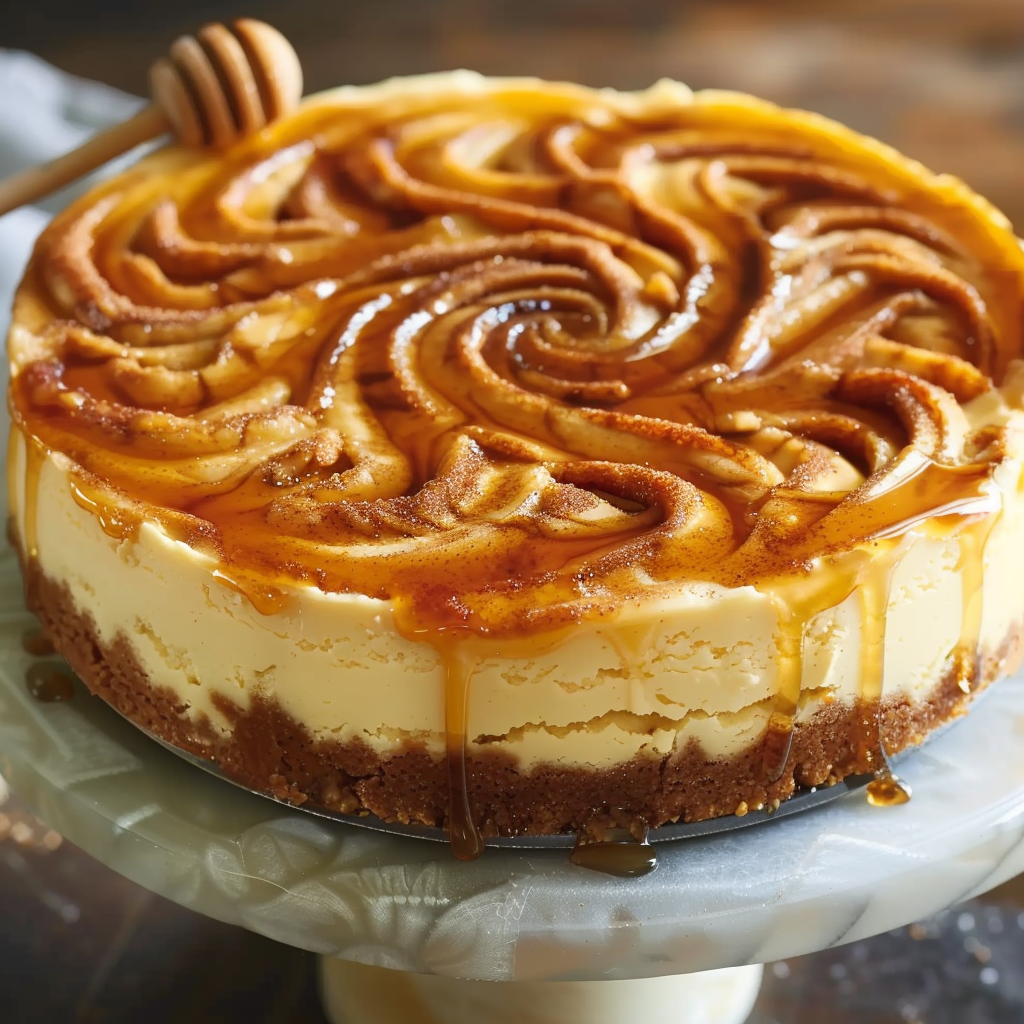
Key Ingredients Breakdown
Creating a truly creamy cinnamon swirl cheesecake begins with choosing the right ingredients. Each component plays a critical role in delivering the rich, bakery-style flavor and velvety texture that defines this dessert.
Core Elements of the Recipe
-
Cream Cheese (24 oz): The foundation of any classic cheesecake, cream cheese provides a smooth, tangy base. Always use full-fat for the best results. Learn more about cream cheese and why it’s essential for that signature silky texture.
-
Sour Cream (1 cup): Adds moisture and a slightly tangy finish that balances the sweetness. Sour cream also helps prevent the filling from cracking during baking.
-
Cinnamon (2 tsp): A key flavor in this dessert. Opt for high-quality ground cinnamon for a bold, aromatic swirl. Discover the rich history of cinnamon and its use in desserts around the world.
-
Honey (¼ cup in filling, 2 tbsp in topping): This natural sweetener enhances the spiced notes and adds a floral undertone, making the filling more nuanced than with sugar alone.
-
Vanilla Extract (1 tsp + 1 tsp in topping): Essential for depth of flavor in both the filling and glaze. Pure vanilla is preferred over imitation for a more robust aroma.
Crust-Specific Ingredients
-
Cinnamon Graham Crackers (2 cups crushed): These add a sweet-spicy base layer that complements the filling. If unavailable, substitute with cinnamon roll cookies for a more indulgent twist.
-
Butter (½ cup melted): Helps bind the crust and gives it richness.
-
Granulated Sugar (¼ cup in crust, 1 cup in filling): Sweetens both the crust and the creamy layer. Using fine sugar ensures even distribution.
Topping Essentials
-
Powdered Sugar (1 cup): For a silky glaze that finishes the cheesecake beautifully.
-
Milk (2 tbsp): Thins the glaze to a pourable consistency. Use whole milk for extra richness.
This recipe offers ample room for personalization. Whether you want to explore other creamy cheesecake recipes or keep it traditional, understanding your ingredients will elevate your baking and help you master this indulgent dessert.
The Crust: Cinnamon Graham Cracker Magic
Why Choose Cinnamon Graham Crackers?
The crust is the base of any cheesecake, and for this recipe, cinnamon graham crackers bring a subtle spiced sweetness that echoes the cinnamon swirl in the filling. Unlike plain graham crackers, cinnamon versions have a built-in warmth that pairs perfectly with the creamy interior. If you’re interested in learning more about the origins and varieties of graham crackers, you’ll discover how they’ve evolved from a simple snack to a beloved dessert base.
Alternatively, if you want a richer, bakery-style base, consider using crushed cinnamon roll cookies. These provide a more indulgent twist and work especially well for special occasions or when baking for guests.
How to Make the Crust
Creating the crust involves just a few simple steps, but precision matters:
-
Step 1: Crush the cinnamon graham crackers into fine crumbs using a food processor or a rolling pin inside a sealed plastic bag. You’ll need about 2 cups.
-
Step 2: Mix the crumbs with ½ cup melted butter and ¼ cup granulated sugar in a mixing bowl.
-
Step 3: Stir until the mixture resembles wet sand and holds together when pressed.
Pressing and Baking the Crust
-
Step 4: Transfer the mixture to a 9-inch springform pan.
-
Step 5: Press it evenly into the bottom using the flat bottom of a glass or measuring cup for a smooth, compact base.
-
Step 6: Pre-bake the crust at 325°F (165°C) for 10 minutes. This helps set it so it holds up beneath the filling and adds a toasty note to the flavor.
To explore more ideas for crust customization, visit this Pinterest collection of graham cracker crust variations. Whether you’re using graham crackers or cinnamon cookies, the goal is a crisp, flavorful base that won’t become soggy once the cheesecake is baked.
Make-Ahead and Storage Tips
One of the advantages of this crust is that it can be prepared ahead of time:
-
Store in the refrigerator for up to 3 days before baking.
-
Freeze the pressed crust (unbaked) for up to 1 month—just wrap tightly in plastic wrap.
Creating the perfect base is a crucial step toward achieving a structurally sound and flavorful cinnamon swirl cheesecake. With the crust done right, you’re ready to move on to the heart of the dessert: the luxurious, creamy filling.
Crafting the Creamy Cheesecake Filling
Cream Cheese Basics
At the core of this dessert is cream cheese—the defining element of any true cheesecake. For optimal results, use full-fat blocks rather than whipped or spreadable versions, as these contain stabilizers that alter the texture. Let the cream cheese soften at room temperature for at least 30 minutes before mixing; this ensures a smoother blend without lumps.
According to Wikipedia’s page on cream cheese, this ingredient originated in the U.S. in the 19th century and quickly became a staple in American baking. For this recipe, you’ll need 24 ounces, or three standard 8-ounce packages.
Using cold cream cheese straight from the fridge can cause clumps in your batter, which will affect the final texture of your creamy cheesecake. Proper softening also helps prevent overmixing, which can lead to cracking during baking.
Mixing the Filling
To begin, beat the softened cream cheese in a large mixing bowl until completely smooth. Then gradually add:
-
1 cup of granulated sugar
-
3 large eggs, one at a time
-
1 cup of sour cream
-
1 tsp vanilla extract
Add each ingredient slowly, ensuring full incorporation before adding the next. Overmixing can incorporate too much air, which may cause the cheesecake to puff up and then collapse or crack.
If you’re new to the technique, this Pinterest board featuring creamy cheesecake tips can help visualize the ideal batter consistency. It should be thick, glossy, and lump-free.
The Role of Cinnamon and Honey
What sets this cinnamon swirl cheesecake apart from classic versions is the use of warm spices and natural sweeteners. Once the base filling is mixed:
-
Add 2 teaspoons of ground cinnamon
-
Mix in ¼ cup of honey
These ingredients not only enhance the flavor but add moisture and depth. Cinnamon delivers warmth and richness, while honey offers a floral, mellow sweetness that complements the tangy cream cheese. To dive deeper into the global importance of cinnamon, consider its ancient origins in sweet and savory dishes alike.
Swirl Technique Tips
Once the filling is prepared, it’s time to build the signature cinnamon swirl.
To create the swirl:
-
Reserve a small portion (about ⅓ cup) of the filling.
-
Add an extra sprinkle of cinnamon or a spoonful of honey to this portion for a stronger swirl effect.
-
Pour the main batter into the pre-baked crust and smooth the top.
-
Drop spoonfuls of the cinnamon-honey filling over the surface.
-
Use a thin knife or skewer to gently swirl the mixtures together in a spiral or figure-eight pattern.
Swirling too much will blend the colors and flavors completely, so aim for distinct ribbons of spice. For more visual inspiration, browse Pinterest cheesecake swirl techniques.
This technique creates both visual appeal and flavor contrast in every bite, elevating the dessert into something that looks as good as it tastes.
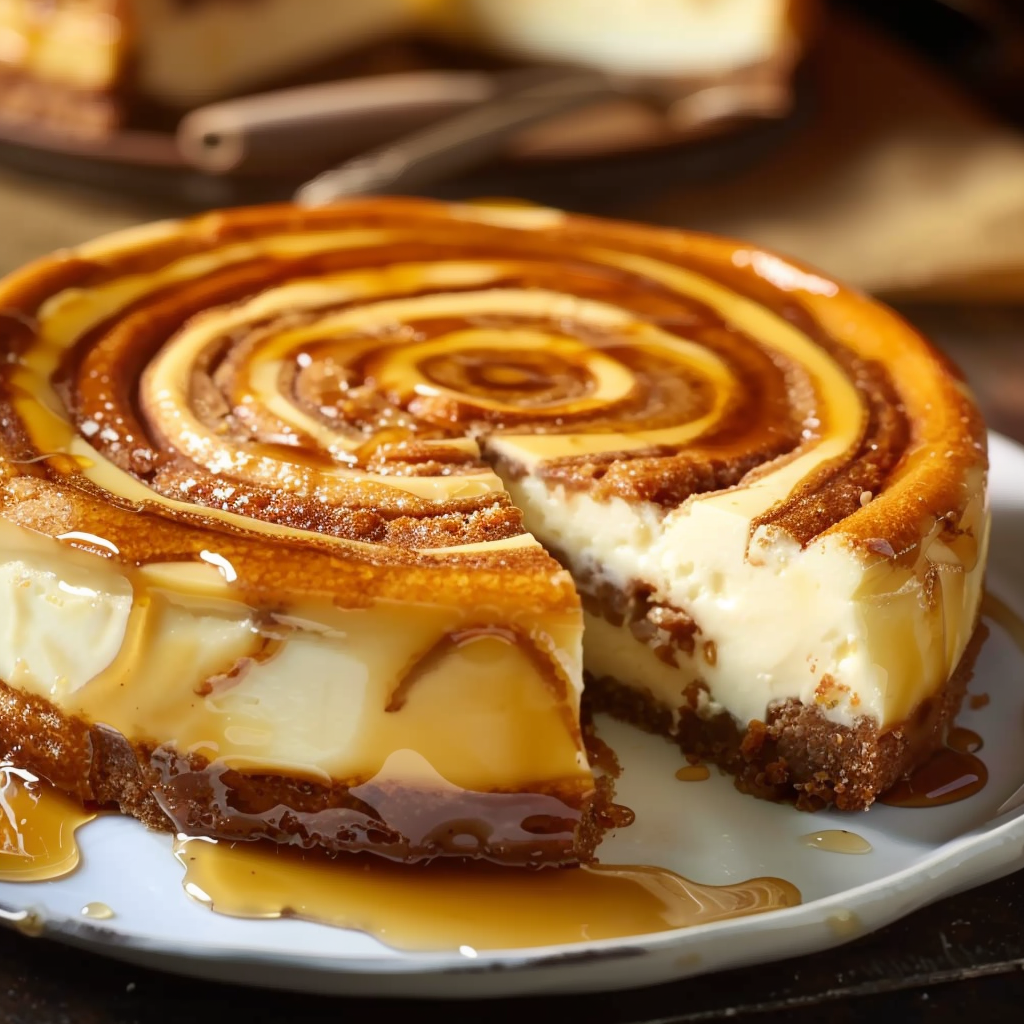
Baking the Cheesecake Like a Pro
Ideal Oven Settings
Preheat your oven to 325°F (165°C) and position the rack in the center. This temperature allows the creamy cheesecake to bake slowly and evenly. Place your springform pan on a baking sheet to catch any drips and help distribute heat.
To achieve a smooth top and luxurious texture, consider using a water bath (bain-marie):
-
Wrap the bottom of the springform pan in foil.
-
Place it inside a larger roasting pan.
-
Add hot water to the outer pan until it reaches halfway up the springform sides.
This method maintains even moisture and temperature, reducing the chance of cracks.
Preventing Cracks
Cracks in cheesecake are common but preventable. Here’s how to avoid them:
-
Don’t overmix the batter.
-
Use only room temperature ingredients.
-
Bake low and slow.
-
Allow the cheesecake to cool in the oven after baking.
Learn more about baking chemistry and techniques in this article on leavening agents, which breaks down how air and steam affect baked goods.
When It’s Done: The Jiggle Test
Begin checking the cheesecake at 55 minutes. Gently shake the pan—if the center jiggles slightly while the edges are set, it’s done. Avoid overbaking, as it will dry out the center and ruin the creamy texture.
Once done, turn off the oven, crack the door, and let the cheesecake sit for 1 hour to cool gradually.
Cooling and Chilling: Unlocking Full Flavor
The cooling phase is just as important as baking. After the initial oven rest, move the cheesecake to the counter to cool to room temperature. Then transfer it to the fridge and chill for at least 4 hours, preferably overnight.
This slow chill allows the filling to fully set and develop rich, balanced flavor. Cover loosely with plastic wrap or foil to avoid moisture build-up.
Never skip this step—rushing the chill will leave the center soft and underdeveloped, compromising the structure and flavor.
Making the Topping
Ingredients and Mixing
The topping is a glaze that brings sweetness and polish to the final dish. In a bowl, whisk together:
-
1 cup powdered sugar
-
2 tbsp milk
-
1 tsp vanilla extract
-
2 tbsp honey
Whisk until smooth and pourable. Adjust consistency with more milk or sugar as needed.
Topping Variations
To change the finish or elevate the flavor:
-
Sprinkle cinnamon sugar over the glaze.
-
Add crushed pecans or chopped walnuts.
-
Drizzle caramel for a sticky cinnamon roll vibe.
When to Add the Topping
Apply the glaze just before serving. This preserves the glossy texture and prevents the surface from getting soggy in the fridge.
Serving & Storage Tips
Cheesecake is easiest to slice cleanly with a warm, sharp knife. Dip the knife in hot water and wipe clean between cuts for picture-perfect slices.
To store:
-
Keep in the fridge for up to 5 days.
-
Freeze whole or in slices for up to 3 months. Wrap tightly in plastic and foil.
-
Thaw frozen cheesecake in the refrigerator overnight.
You can also explore storage ideas via this Pinterest board to help prolong freshness and quality.
Customization Ideas
Add a Cinnamon Roll Crust
Replace the graham cracker base with baked cinnamon rolls pressed into the bottom of the pan. It’s indulgent and adds bakery-style flair.
Add-ins & Mix-ins
Enhance the flavor and texture by adding:
-
White chocolate chips
-
Chopped pecans or walnuts
-
Cinnamon chips or toffee bits
Mini Cheesecakes or Bars
Make individual cheesecakes by baking the batter in muffin tins or use a square pan to create cheesecake bars—ideal for events, bake sales, or gifting.
Common Mistakes to Avoid
-
Overmixing: Introduces excess air and causes cracks.
-
Skipping ingredient softening: Leads to a lumpy batter.
-
Rapid temperature change: Causes splitting or collapsing.
-
Under-chilling: Results in a loose, messy texture.
Following each step carefully is the key to a perfect cinnamon swirl cheesecake every time.
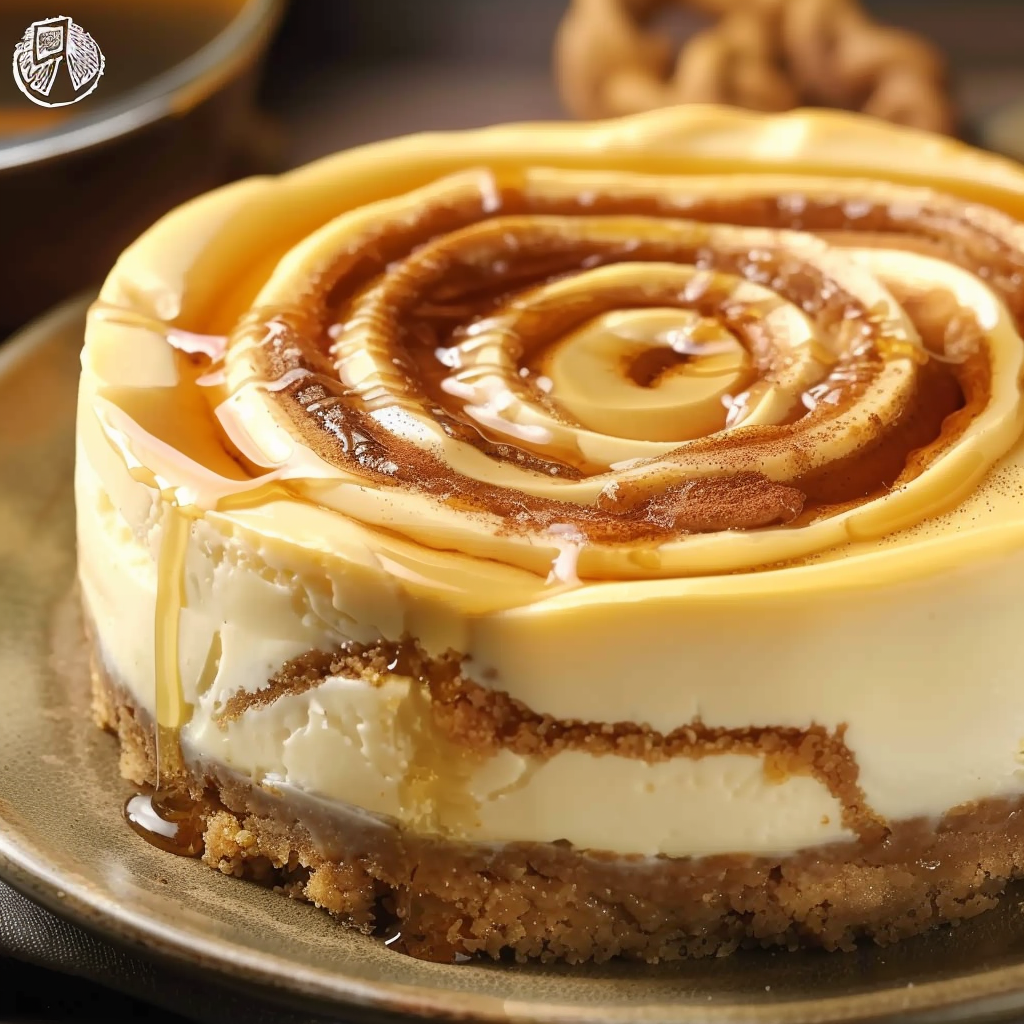
FAQs: People Also Ask
Can you use cinnamon rolls as a cheesecake crust?
Yes, cinnamon rolls can be baked flat into a crust for a soft, doughy alternative. Pre-bake the rolls slightly to avoid sogginess.
What’s the difference between cinnamon cheesecake and cinnamon roll cheesecake?
Cinnamon cheesecake has spice blended throughout, while cinnamon roll cheesecake features cinnamon swirl, cinnamon crust, or glaze—often inspired by the classic pastry.
How do I make cheesecake creamy and not dry?
Use full-fat dairy, avoid overbaking, and chill thoroughly. Don’t skip sour cream or honey, as both help preserve moisture.
Can you freeze cinnamon roll cheesecake?
Yes. Slice, wrap tightly, and freeze for up to 3 months. Thaw overnight in the fridge before serving.
Why did my cheesecake crack in the middle?
Overbaking or sudden cooling are common causes. Bake low and slow, and cool gradually in the oven.
Can I make this cheesecake without sour cream?
You can substitute with Greek yogurt or heavy cream, but it may slightly alter texture and tanginess.
PrintCreamy Cheesecake Guide Cinnamon Swirl Cheesecake with Graham Cracker Crust
Creamy Cinnamon Swirl Cheesecake with Graham Cracker Crust is the perfect blend of two dessert classics. With a buttery cinnamon graham cracker base and a silky cream cheese filling swirled with cinnamon and honey, this cheesecake is both nostalgic and elegant. Finished with a drizzle of honey glaze, it’s the ideal centerpiece for holidays, potlucks, or cozy weekends.
- Author: Clara
Ingredients
For the crust:
- 2 cups crushed cinnamon graham crackers (or cinnamon roll cookies)
- ½ cup melted butter
- ¼ cup granulated sugar
For the cheesecake filling:
- 24 oz (675g) cream cheese, softened
- 1 cup granulated sugar
- 3 large eggs
- 1 cup sour cream
- 1 tsp vanilla extract
- 2 tsp ground cinnamon
- ¼ cup honey
For the topping:
- 1 cup powdered sugar
- 2 tbsp milk
- 1 tsp vanilla extract
- 2 tbsp honey
- Optional: drizzle of cinnamon glaze or sprinkle of cinnamon sugar
Instructions
Preheat your oven to 325°F (165°C).
In a bowl, combine crushed cinnamon graham crackers, melted butter, and sugar. Press the mixture firmly into the bottom of a 9-inch springform pan to form the crust. Bake for 10 minutes, then set aside.
In a large mixing bowl, beat cream cheese until smooth. Add sugar and continue mixing until well blended.
Beat in eggs one at a time, mixing well after each addition. Add sour cream, vanilla, cinnamon, and honey, then mix until creamy and smooth.
Pour the filling over the baked crust, smoothing the top evenly.
Bake for 55–65 minutes, or until the center is just set but slightly jiggly. Turn off the oven and let the cheesecake cool inside for 1 hour.
Remove from oven and refrigerate for at least 4 hours or overnight for best results.
For the topping, whisk powdered sugar, milk, vanilla, and honey until smooth. Drizzle over the cooled cheesecake before serving. Optionally sprinkle with extra cinnamon sugar for added flavor.
Notes
-
Use full-fat ingredients for optimal texture and taste.
-
Always soften cream cheese and sour cream before mixing.
-
A water bath helps prevent cracks.
-
Let it chill overnight for the best consistency.
-
Store glazed cheesecake in the fridge; freeze unglazed for longer shelf life.
-
Apply the topping just before serving for a clean, glossy finish.
